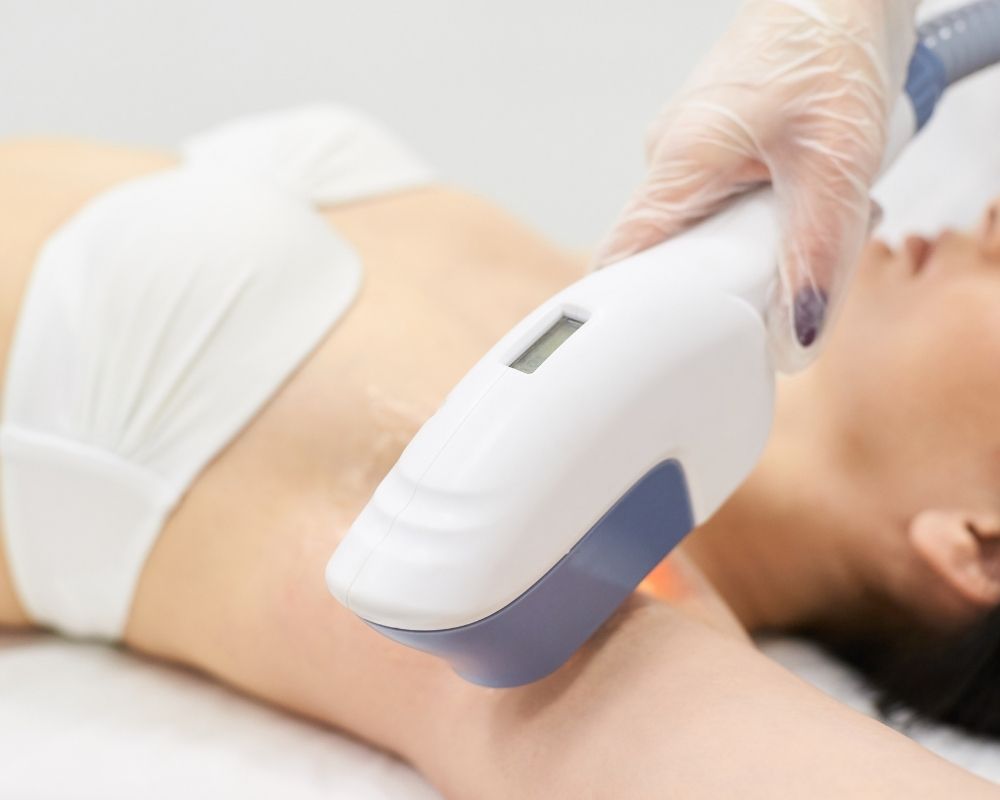
Chafing & Hair Removal - What You Need To Know
Hair removal and chafing are two things that most women would prefer not to deal with. That being said, chafing and hair removal do impact each other. Sometimes hair removal impacts chafing in positive ways, but it can also cause painful and harmful skin damage. Knowing how to prevent chafing and irritation during hair removal will make life much more comfortable, so the more you learn about the relationship between chafing and hair removal, the better.
Here are some common questions we find women (and men, for that matter!) asking about hair removal and its impact on the inner thigh, bikini, and buttock chafing.
Does hair removal stop chafing?
Hair removal can sometimes help stop chafing, but not always. There are many different ways to remove unwanted hair, such as shaving, waxing, depilatory creams, sugaring, threading, and more. Many men and women who suffer from frequent chafing will also suffer from ingrown hairs and irritation of the hair follicles. The friction that causes a changing rash can just as easily inflame and irritate hair follicles, which can lead to painful ingrown hairs and darkened skin.
One of the best ways to avoid chafing and ingrown hairs is to use laser hair removal. This method is a permanent hair removal solution that can eliminate both stubble and ingrown hairs and prevent further skin trauma. Laser hair removal can effectively keep you comfortable and free from chafing-related ingrown hairs. However, it will not prevent chafing. Chafing will always occur when you have skin-on-skin friction, so you should wear Bandelettes® Thigh Bands or take preventative measures to stop chafing.
Does shaving help with chafing?
Shaving is one of the most common forms of hair removal because it is low-cost, painless, and quickly done at home. When done correctly, a good shave can exfoliate and smooth skin. However, shaving skin, particularly in the bikini area, can make the skin bare and leave it more prone to chafing. This is often the case in areas of high friction when clothing rubs against the skin, which has been left bare and unprotected. Underarms and bikini lines, for example, can be especially susceptible to chafing after shaving.
Does shaving make chafing worse?
Yes, shaving can make chafing worse. A lousy shave job can make chafing much more painful. Using a razor that isn’t clean or shaving without proper shaving cream or lubricant can exacerbate a chafing rash. You should let chafing heal before shaving in that area. If you experience chafing regularly and want to shave, you will need to use an anti-chafing treatment to prevent chafing. This solution could be either Bandelettes® Thigh Bands or anti-chafing shorts. We don't recommend using DIY chafing treatments or alternative creams on freshly shaved skin as they may just cause more skin irritation. Shaving chafed skin could lead to infections or scarring, so it should be avoided.
Can friction get rid of hair?
Yes, friction can get rid of hair. This condition is known as frictional alopecia. The condition is fairly common and describes hair loss (which could be anywhere on the body) caused by excessive rubbing of the hair, follicles, and skin around the hair follicle. Deliberate alopecia is not a method you should attempt at home. It would be unpleasant and downright dangerous to try on your inner thighs. Not everyone will experience frictional alopecia, the most common example is hair loss around the ankle. This is a condition common among people who often wear tight socks. If you suffer from frequent thigh chafing, you may also have noticed diminished hair growth on your inner thighs. Hair loss may seem like a silver lining. But when hair loss comes along with painful thigh chafing, discoloration, and ingrown hairs, it’s really not worth the hair loss benefits!
How do you treat chafing and ingrown hairs?
Skin chafing and hair irritations like ingrown hairs shouldn’t be ignored. Good grooming practices, such as drying and washing skin regularly, avoiding harsh chemicals, and preventing friction can go a long way. But chafing can still happen. Without treatment, ingrown hair follicles and chafed skin can get worse and more painful. This may lead to bleeding, skin infections or permanent scarring, and skin discoloration in the worst cases. Chafed skin should be treated with anti-chafing products. Your beautician, cosmetologist, or dermatologist can treat ingrown hairs. Whatever you do, don’t ignore chafing. Painful chafing can easily be prevented.
Don’t let chafed thighs or hair irritation prevent you from enjoying your day-to-day life. Learn how to treat chafing and prevent further irritation.







